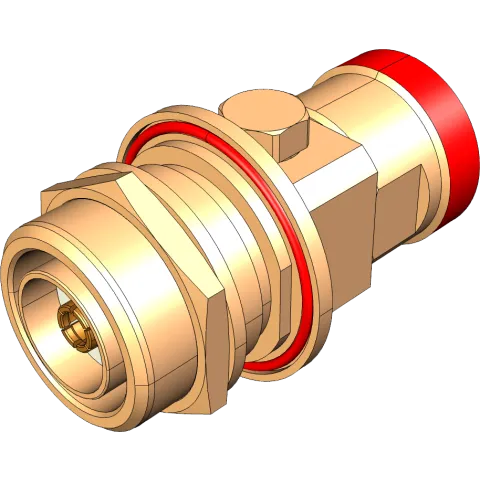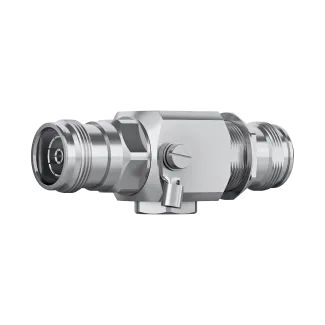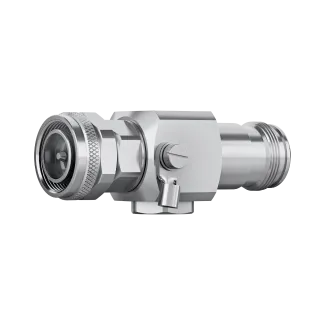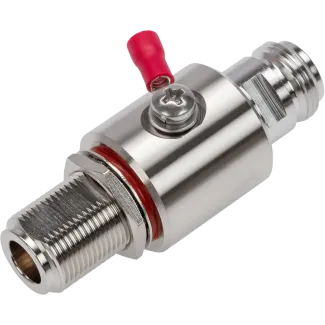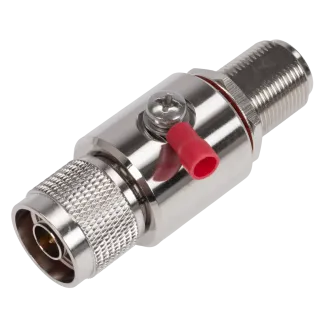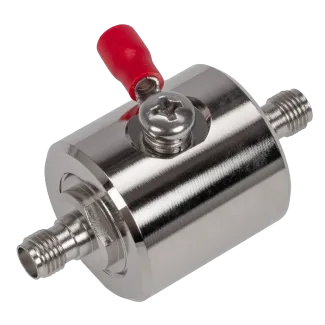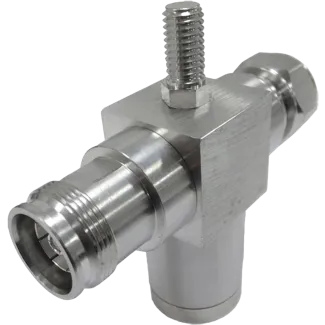An RF surge protector, also known as an RF lightning arrester or coaxial surge suppressor, is a device used to protect sensitive electronic equipment from high voltage surges typically caused by lightning strikes or other transient events. These protectors are critical in maintaining the integrity of communication systems, ensuring that high-frequency signals are not disrupted by sudden electrical surges.
One of the main types of RF surge protectors is the Gas Discharge Tube (GDT) surge protector. These devices utilise a gas-filled tube to discharge high voltage surges from the centre conductor to the ground. When the voltage exceeds a specific threshold, the gas ionises and creates a conductive path, effectively shorting the surge to the ground. GDT surge protectors are highly versatile, offering protection across a wide range of frequencies and handling significant surge currents.
Another prominent type is the Quarter-Wave (λ/4) Shorting Stub. This design involves a direct short-circuit between the inner and outer conductor. The length of the short-circuit path is calibrated so that certain frequencies are reflected back in phase with the input signal, while all other frequencies are shorted to the ground. These surge protectors are particularly beneficial for applications sensitive to intermodulation and where extremely high discharge currents are necessary. They are robust, service-free, and can handle discharge currents exceeding 100 kA, ensuring comprehensive protection for critical installations.
Incorporating RF surge protectors into your infrastructure is not just about preventing damage; it's about maintaining the integrity and performance of your communication systems. Whether for traditional telecommunications or advanced 5G networks, understanding and utilising the right surge protection can make a significant difference in the reliability of your systems.
